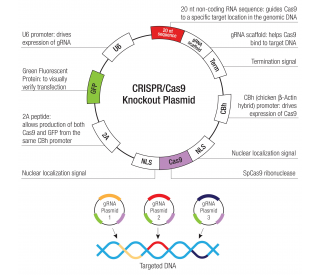Purity
>95%, by SDS-PAGE under reducing conditions and visualized by silver stain
Endotoxin Level
<0.01 EU per 1 μg of the protein by the LAL method.
Activity
Measured by its binding ability in a functional ELISA. When Recombinant Human IGF-II R is immobilized at 2 μg/mL (100 µL/well), the concentration of Recombinant Human CREG (Catalog # 2380-CR) that produces 50% of the optimal binding response is found to be approximately 2 ‑ 10 ng/mL.
Source
Chinese Hamster Ovary cell line, CHO-derived Gln41-Asp1365, with a C-terminal 6-His tag
Accession #
N-terminal Sequence
AnalysisAla43
Structure / Form
Noncovalently-linked homodimer
Predicted Molecular Mass
147 kDa (monomer)
SDS-PAGE
160-180 kDa, reducing conditions
6418-GR |
| |
Formulation Lyophilized from a 0.2 μm filtered solution in PBS. | ||
Reconstitution Reconstitute at 100 μg/mL in PBS. | ||
Shipping The product is shipped at ambient temperature. Upon receipt, store it immediately at the temperature recommended below. | ||
Stability & Storage: Use a manual defrost freezer and avoid repeated freeze-thaw cycles.
|
Background: IGF-II R
The type 2 insulin-like growth factor receptor (also known as cation-independent mannose-6 phosphate receptor/CI-MPR) is a 300 kDa member of the P‑type lectin family of molecules. P‑type lectins generate functional eukaryotic lysosomes by binding and sorting lysosomal enzymes expressing phosphorylated mannose residues (M6P) (1, 2, 3). IGF-II R is a type I transmembrane glycoprotein that contains a 2,264 amion acid (aa) extracellular region, a 23 aa transmembrane segment segment and a 164 aa cytoplasmic tail (4, 5). The extracellular region consists of 15 contiguous "binding" repeats of about 150 aa each. The odd-numbered repeats interact with "ligands" while the even-numbered repeats likely generate a nondisulfide homodimer in the membrane (1). Repeat #11 binds IGF- II, while repeats 3 and 9 bind mannose-6 phosphate; repeat #13 contains a fibronectin type II motif and assists in IGF-II binding (1, 2). In addition to IGF-II, CI‑MPR/IGF‑II R binds non-M6P containing ligands such as retinoic acid, urokinase-type plasminogen-activator receptor and plasminogen, plus M6P‑containing molecules such as lysosomal enzymes, TGF-beta 1 precursor, proliferin, LIF, CD26, herpes simplex glycoprotein D and granzymes A and B (2, 6) IGF-II R regulates many diverse biological functions that range from intracellular trafficking to the internalization of extracellular factors and modulation of cellular responses. It delivers newly synthesized M6P‑tagged lysosomal enzymes from the trans-golgi network to endosomes, and facilitates the clearance of extracellular lysosomal and matrix degrading enzymes by internalization into clathrin‑coated vesicles and delivery into endosomes. With respect to IGF-II biology, It would appear that IGF-II R is principally a regulator of local IGF-II levels, targeting IGF-II for destruction in lysosomes (2). However, some evidence suggests the receptor will signal via G-proteins, an effect that has yet to be conclusively shown (6).
References:
Ghosh, P. et al. (2003) Nat. Rev. Mol. Cell. Biol. 4:202.
Dahms, N. M. & M.K. Hancock (2002) Biochim. Biophys. Acta. 1572:317.
Zaina, S. & J. Nilsson (2003) Curr. Opin. Lipidol. 14:483.
Morgan, D.O. et al. (1987) Nature 329:301.
Oshima, A. et al. (1988) J. Biol. Chem. 263:2553.
Hawkes, C. & S. Kar (2004) Brain Res, Rev. 44:117.
Long Name:
Insulin-like Growth Factor II Receptor
Entrez Gene IDs:
3482 (Human)
Alternate Names:
300 kDa mannose 6-phosphate receptor; cation-independent mannose-6 phosphate receptor; cation-independent mannose-6-phosphate receptor; CD222 antigen; CD222; CI Man-6-P receptor; CIMPR; CI-MPR; IGF2R; IGF-II R; IGF-II receptor; IGFIIR; IGF-IIR; insulin-like growth factor 2 receptorM6P/IGF2R; Insulin-like growth factor II receptor; M6P/IGF2 receptor; M6PR; M6P-R; MPR 300; MPR1; MPRI; MPRIM6PR










